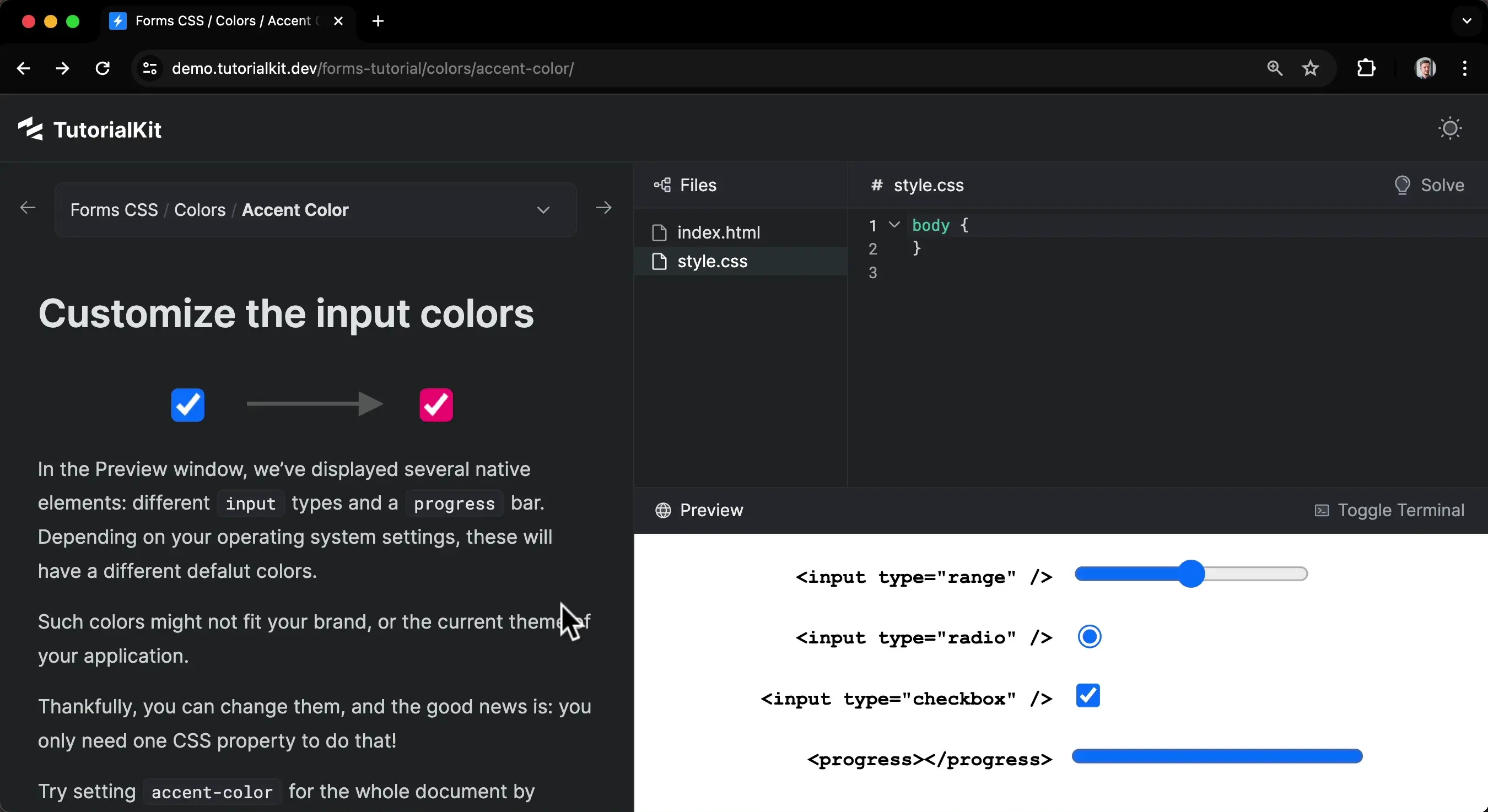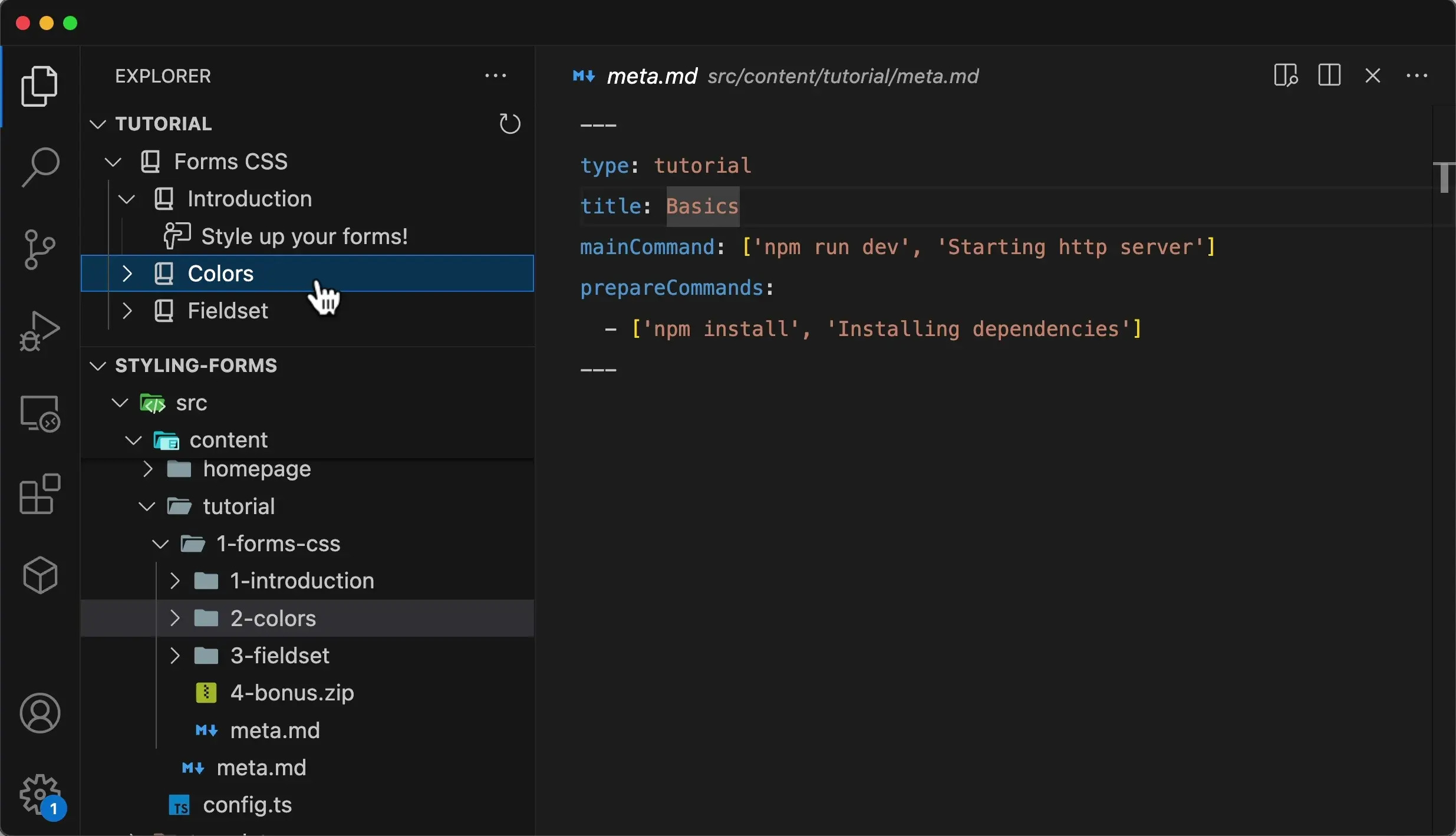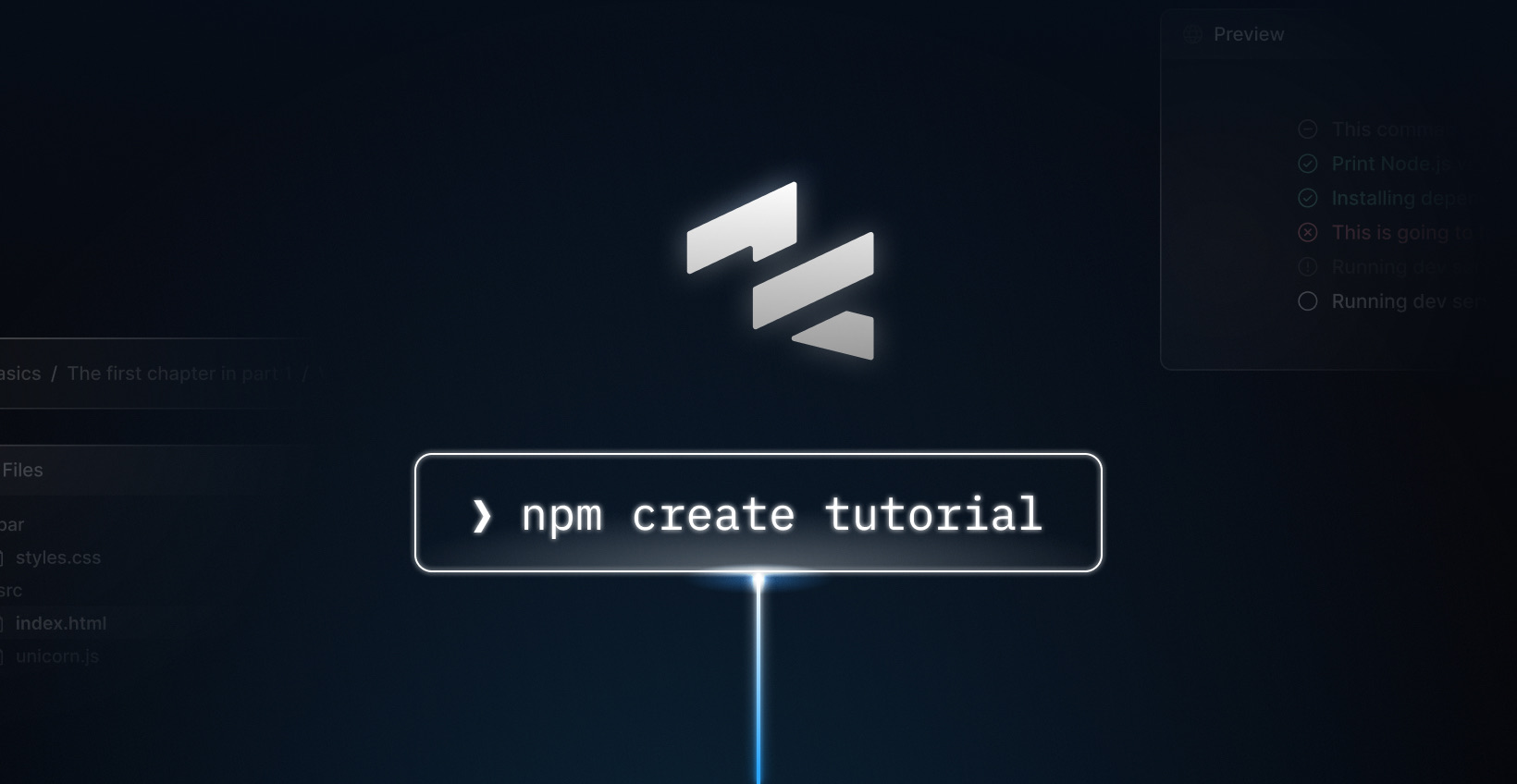Imagine creating a hands-on, fully interactive coding environment in minutes—all from your browser. This is the reality that TutorialKit brings to the world of web development education.
In the ever-evolving landscape of web development, staying up-to-date with the latest technologies and frameworks can feel like trying to drink from a firehose. Recognizing this challenge, the team at StackBlitz has introduced TutorialKit, an innovative open-source tool designed to simplify the creation of interactive coding tutorials.
At a glance, TutorialKit offers:
- No setup required – everything runs in your browser
- Real-time coding and instant feedback
- Full-stack support for comprehensive tutorials
- Customizable learning experiences
A Glimpse into TutorialKit
Before we dive deeper, let’s take a look at what TutorialKit can do:

In this example, you can see how a TutorialKit tutorial combines explanatory text with a live code editor and preview pane, allowing learners to experiment with React concepts in real-time. It’s like having a personal coding instructor right in your browser!
The Birth of TutorialKit
TutorialKit’s story begins with the success of interactive tutorials like those created for Svelte and SvelteKit. These tutorials showed how hands-on learning could help developers grasp new concepts as easily as a chef learns a new recipe by cooking it. The spark that ignited TutorialKit’s development came when Rich Harris, the creator of Svelte, approached StackBlitz with a specific request.
“We needed a way to create interactive tutorials for SvelteKit that could handle backend functionality without complex setups,” Harris explains. “StackBlitz’s web container technology seemed like the perfect solution, but we needed it to work outside of stackblitz.com.”
This request led to the development of TutorialKit, a tool that would make creating such tutorials as easy as writing a blog post.
Technology at Its Core
TutorialKit’s magic lies in two key technologies:
- WebContainers: Bringing Node to the Browser TL;DR: WebContainers allow you to run a complete Node.js environment in your web browser. WebContainers create a virtual Node.js environment right in your browser. Imagine having a fully-functional computer, but instead of sitting on your desk, it exists inside your web browser. This technology allows developers to run npm commands, start servers, and execute Node.js code as if they were working on their local machine.
- Astro: Simple Deployment TL;DR: Astro makes it easy to turn your tutorial into a fast, static website. Built on Astro, a modern static site generator, TutorialKit ensures that your tutorials can be easily deployed as static websites. Think of Astro as a super-efficient packing robot that takes all the complex parts of your tutorial and neatly packages them into a simple, fast-loading website.
Additionally, TutorialKit leverages WebAssembly (WASM) to extend its capabilities. WASM acts like a universal translator, allowing TutorialKit to potentially include other languages like Python in tutorials. For instance, with WASM support, developers could potentially add Python tutorials that run directly in the browser, opening up new avenues for backend education. It’s like having a Swiss Army knife for coding education!
Empowering Developers with a Seamless Experience

TutorialKit places a strong emphasis on developer experience, aiming to make tutorial creation as painless as possible:
- Intuitive File Structure: Organize your tutorials as easily as you’d arrange files in a folder.
- Smart Templating: Reuse common elements across lessons, saving time and ensuring consistency.
- Flexible Configuration: Customize your tutorial’s look and feel at various levels, like adjusting the seasoning in a recipe to suit different tastes.
- VS Code Extension: Enhance your workflow with features like easy navigation and error checking, as if you had a helpful assistant looking over your shoulder as you work.
Real-World Adoption and Impact
TutorialKit is already making waves in the developer community. Here are some success stories:
- Vite Plugin Tutorial: Ari Perkkiö, one of TutorialKit’s lead engineers, created a comprehensive guide that has helped developers understand Vite plugins more quickly. Users report a 50% reduction in learning time compared to traditional text-based tutorials.
- Remult Learning Resource: The team at Remult saw a 30% increase in user adoption after launching their interactive tutorial at learn.remult.dev.
- Next.js Patterns: An upcoming tutorial series at nextpatterns.dev is generating buzz among beta testers. As one user puts it, “It’s like having a personal mentor guiding you through each concept. I’ve never understood Next.js so clearly before!”
Sarah Chen, a fullstack developer who used TutorialKit to create tutorials for her team, shares her experience: “TutorialKit cut our onboarding time in half. New team members can now dive into our codebase with hands-on examples right in their browser. It’s been a game-changer for our productivity.”
How TutorialKit Solves the Interactive Tutorial Challenge
Traditional coding tutorials often fall short in providing hands-on experience, especially for full-stack development. Here’s how TutorialKit addresses this:
- No Setup Required: Say goodbye to configuration headaches. TutorialKit runs entirely in the browser, like having a fully-equipped kitchen that appears at the click of a button.
- Real-time Feedback: See your code results instantly, making learning as responsive as a live cooking show.
- Full-stack Capability: Simulate both frontend and backend environments, allowing for comprehensive tutorials that cover the entire development process.
- Customizability: Tailor the learning experience to specific technologies or frameworks, like creating a custom workout plan for your coding skills.
Open Source and Community-Driven
TutorialKit isn’t just a tool; it’s a community project that thrives on collaboration. We invite developers to use, modify, and contribute to the project.
Ready to get involved? Here’s how:
- Visit our GitHub repository
- Check out the ‘Issues’ tab to see what’s currently being worked on
- Fork the repo and submit a pull request with your improvements
- Join our community discussions to share ideas and get help
Whether you’re fixing bugs, adding new features, or providing feedback, your contribution can help shape the future of coding education!
Building More Than Just Tutorials
TutorialKit’s modular design means its components can be used beyond just creating tutorials. Developers can integrate parts of the TutorialKit interface into their own projects, opening up possibilities for interactive documentation, custom learning tools, and more.
For example, imagine integrating TutorialKit’s live editor into your API documentation. Users could experiment with code snippets directly on the page, seeing how different API calls work in real-time. This kind of interactive documentation could significantly enhance user understanding and adoption of your tools.
Looking Ahead and Getting Started
As TutorialKit approaches its 1.0 release, the team continues to refine and expand its capabilities. With its user-friendly approach and powerful underlying technology, TutorialKit is poised to become the go-to solution for creating interactive coding tutorials across the web development ecosystem.
Ready to revolutionize your tutorial creation process? Here’s why you should dive in now:
- Early Adopter Advantage: Join the growing community of developers shaping the future of interactive coding education.
- Upcoming Features: Get a head start on upcoming features and provide valuable feedback to influence the tool’s development.
- Immediate Impact: Start creating engaging, interactive tutorials that can significantly improve learning outcomes for your users or students.
Head over to tutorialkit.dev to get started, explore sample tutorials, and join the TutorialKit community. Don’t miss out on the opportunity to be at the forefront of this educational revolution in web development!





Leave a Reply